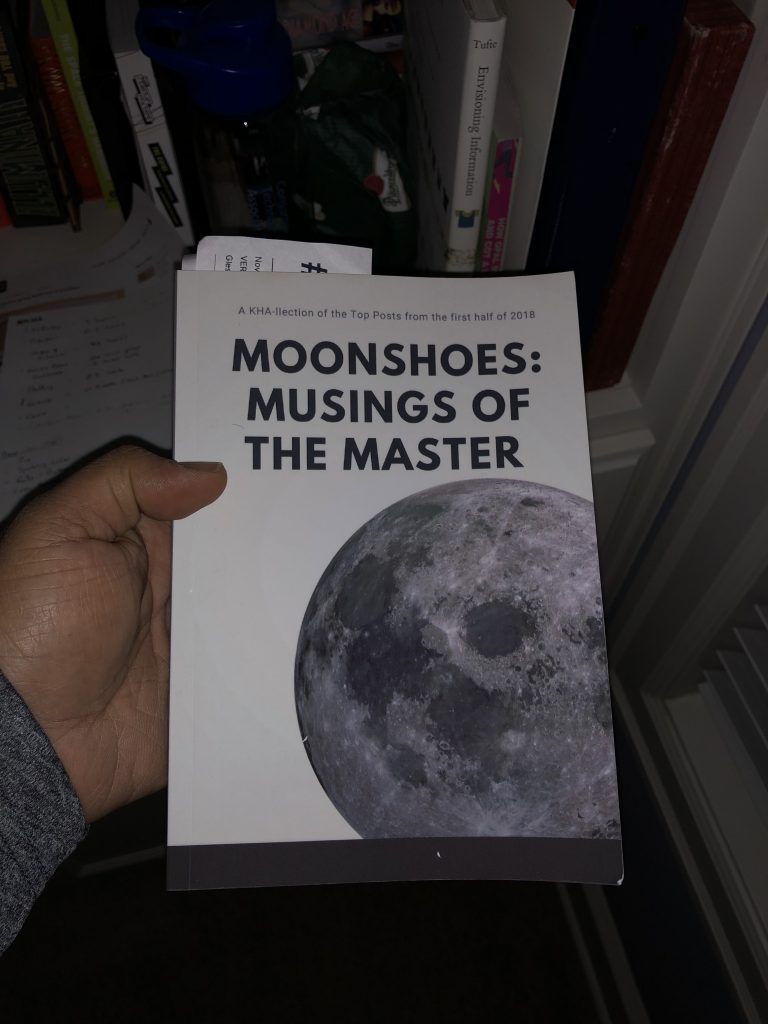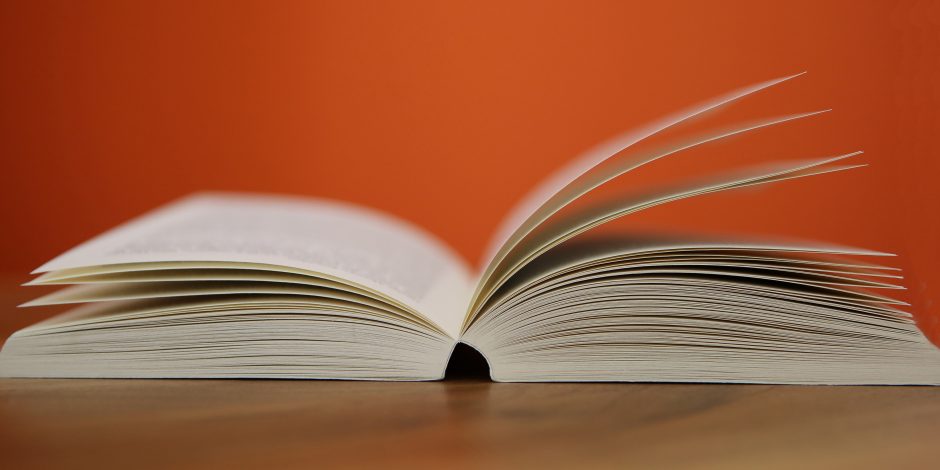“They tried to bury us. They didn’t know we were seeds.”
Old Mexican Proverb
My favorite quote is about planting the seeds of your future self. I teach others to do the same. Each of these books contain ideas that will plant a seed of change in your mind. I hope you choose a few to read and that you grow a beautiful garden.

The Innovation Blind Spot by Ross Baird
An amazing read that asks why investment and philanthropy are viewed as separate actions. The author puts forward the concept of “one pocket investing” where both can be achieved at once. I reviewed this book extensively here. Pick this up if you’re curious about impact investing.

Measure What Matters by John Doerr
This is the story of OKRs (Objectives + Key Results), a performance measurement technique that originated at Intel but was adopted widely by the entire tech industry. Users include Google, the Gates Foundation, even Bono. Using OKRs, each organizational goal is summarized in an Objective, or visionary statement, and Key Results, or individual, measurable accomplishments. OKRs can be chained to ensure that whole organizations are moving in the same direction. Individual Key Results are negotiated by the subject matter experts, which is the way it should be. Effective adoption of OKRs takes time and cultural integration, but the results speak for themselves. In fact, this book is filled with stories, techniques, and tips that John Doerr himself has applied in multiple tech companies. Very important book and well worth your time to read!
We used OKRs to prep team Melaknow for TYE Global Competition in 2018. With the clear vision and measurables, the team became highly synchronized and they accomplished much more than expected. The competition? They won First place!

Multipliers by Liz Wiseman
Have you ever worked for a manager that seems to demotivate or drain capability from a team? Conversely, have you ever worked for someone that made you feel like you could do anything, who managed to make a team MUCH greater than the sum of its parts? Multipliers is a an exploration of why this happens and the five key disciplines needed to turn smart leaders into genius builders. This is the most important management books I’ve ever read and has highly influenced my own leadership style. If you have limited space on your bookshelf, this one deserves a spot.

Sprint by Jake Knapp
If you’re working under an Agile or Lean process inside a corporation, then the term Sprint is familiar to you. in Jake Knapp’s book of the same name, the Sprint is a focused methodology to solve big problems in new spaces in just five days. This book was recommended to me by a close friend, based on our work with Startup Weekend and our interest in corporate innovation. What you’ll find in here is a streamlined, well-tested process to bring data-driven clarity to any big problem. The key is that it’s not onerous process- it’s just enough to inspire that burst of creativity needed to push past the problem. Each step is explained through case studies told by companies you will recognize, such as Slack. You might even recognize the problems they solved with Sprints, if you were an early adopter! The backstory of how this method was developed at Google is just as interesting as the technique itself. It’s a quick read- I tore through it three times in a week- and the final 10% is literally a handbook to get you started. I can’t wait to apply this to one of my projects. Maybe a new startup idea?

Factfulness by Hans Rosling, with Ola Rosling and Anna Rosling Ronnlund
I learned about this book from Bill Gates’ summer reading list. I picked up a copy in India for some light reading. This book was much more than I bargained for. It explores ten instincts that shape our worldview, but that distort actual data and facts. All of this is presented by examining key statistics about the world using data from the United Nations. There’s a lot to learn from this book, but I was most shocked to learn which specific instincts that are distorting my own worldview. I invite you to learn your own. Magnificent read!

10 Types of Innovation by Larry Keeley
Earlier this year I was asked to speak about applying the Innovation process at Intel. I struggled with this question, because not every person can approach innovation in the same way. I lacked a vocabulary that would make it clear and that would help people self-identify the types of innovation most applicable to themselves. That is, until I saw Larry Keeley’s talk about the 10 Types of Innovation. Based on 30+ years of research, this book covers how innovation is applied by companies large and small. I had three big epiphanies while reading this book. First, there are just two basic types of product innovation (improving products or systems) and there are 8 types that have more to do with design and business. Second, that business leaders, engineers, and designers each have a different set of innovations that they learn at University and that they have difficulty seeing the others. Third, that the most successful products and companies mix five types of innovation to change the world. Read that last one again- it means that you need three different perspectives to make big change. If you’re practicing innovation inside a corporation or want to apply innovative thinking to your own startup, this book is a must read. If you would like to try a sample of this book, check out the free iPad app.

How to be Everything by Emilie Wapnick
If you’ve ever been described as a generalist or have been accused of having too many projects, this book is for you! How to be Everything is made for people who like to “cross the streams” or apply skills from multiple, diverse skillsets to solve interesting problems. There were two big takeaways for me. First, multipotentialites (a name I like much better than the perjorative “generalist”) operate in a spectrum spanning two extremes: at one end, they dive into a single area, but switch every few years and on the other they have sometimes dozens of concurrent projects. Care to guess where I fall on that continuum? Second, that multipotentialites can structure their work lives to give themselves the variety they need without confusing specialist managers and co-workers. This book is a guide into making the latter happen. I genuinely felt like someone understood me just a few pages into this book. If any of this resonates with you, please pick up a copy of this book and visit the associated website.

Envisioning Information by Edward R. Tufte
This book was recommended to me after a friend attended one of Mr. Tufte’s seminars on design and data presentation. In it you’ll find a fascinating look at how people process information and how to arrange it visually to make it both relatable and compelling. This is well worth a look.

Design is Storytelling by Ellen Lupton
I picked up this book on a whim from the Cooper Hewitt Design Museum. I was really attracted to its ideas, but ultimately I found it lacked an AHA moment. It was filled with a lot of examples of how good design supplemented good storytelling. I’m including it on this list for that reason- maybe you’ll find it compelling?

World War Z by Max Brooks
Yes, this is a science fiction book, but it’s one of the best examples of storytelling I’ve ever seen. And it contains a lesson around building group Key Performance Indicators (KPIs) I’ve ever seen. I actually use that example when I teach. Buy a copy – it’s well worth a read and nothing like the craptastic movie that (shamefully) shares its name.


Generative Design by Benedikt Gross, Hartmut Bohnacker, Julia Laub, and Claudius Lazzeroni
This is a technical manual about generating art and objects using purely software code. The previous version uses the language Processing and the newer one, Javascript. Increasingly, the content we consume is being generated by apps (snapchat filters and overlays), tools (video game characters/scenes), and AI (custom content on Facebook, etc.). Understanding how appealing content is created automatically will be a critical skill in the near future. This book is a dense introduction into the many ways art can be generated. From there, you might apply these techniques to games and 3d-printable objects. Very well worth a look if you’re a content creator.

Moonshoes: Musings of the Master by Kha Ly
The last book on my 2018 reading list, and the newest entry. You won’t find this in any bookstore or library. I got my copy by speaking at a Masterminds group for off-road entrepreneurs. If a mentor could be converted into a book, this is what it would look like. Equal parts life stories, sage advice, marketing tips, technology insight, bound together by ascerbic commentary, Moonshoes challenges you to stop waiting for things to happen to you, and to make things happen for you. I’ve known Kha for a while and feel we’re on parallel paths. I treat this book like a sensei on my bookshelf and have taken to cracking it open when I feel the need for advice.
PS: Shelley Krehbiel of www.unscrpt.com curated this book for Kha. You could say that helping people rewrite the script to a life of their choosing is her passion.





No Comments